The first units of the new Peugeot 2008 have left the production line at the Stellantis manufacturing plant in Gurun, Kedah. The production is meant for the Malaysian market as well as for export to neighbouring countries. Sales will start in Thailand this month and there will also be lefthand drive versions produced for markets such as the Philippines.
“Built in ASEAN for ASEAN, we’re proud to announce that the first locally-produced new Peugeot 2008 vehicles will be on their way to customers in Southeast Asia in the coming months,” said Christophe Musy, Senior Vice-President, ASEAN & General Distributors at Stellantis.
“This is an important step in our plan to enlarge the Stellantis manufacturing footprint in the region and the first example of our ambition to expand the portfolio of Stellantis vehicles built in Southeast Asia,” said Mr. Musy.
The 2008 comes with Full LED Headlights, Peugeot’s signature 3-claws Light, the new Peugeot i-Cockpit 3D, 3D Quartz Cluster and 7-inch HD Touchscreen with Toggle Switches. It also has the latest Advanced Driver Assistance Systems (ADAS) that include Automatic Emergency Braking, Driver Attention Assist 3, and Active Blind Spot Detection + Lane Keep Assist.
Peugeot engineers have done extensive endurance and quality testing in local conditions, with up to 200,000 kms around Malaysia in the diverse local climate and environmental landscape to ensure it is suited for Southeast Asian conditions.
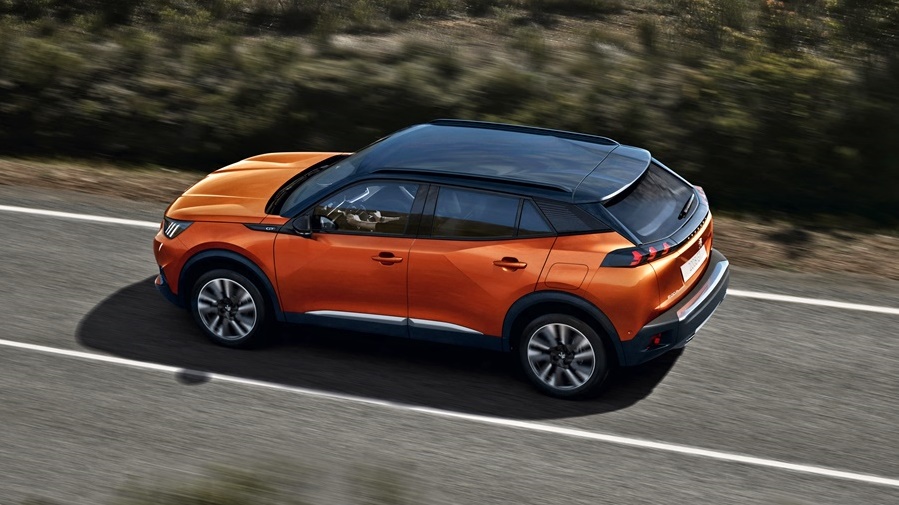
Despite forced closure of the plant for an extended period (due to government actions to fight the pandemic), the Stellantis manufacturing team in Malaysia was able to keep to production timelines. By utilizing dynamic online tools and methodologies, they virtually collaborated with colleagues in China and Europe.
“What we’ve been able to achieve at the Gurun plant in Malaysia over the past few months is a great achievement, and we are now focused on continuing the momentum to keep up with the increased customer demand for locally-manufactured Peugeot vehicles in the region,” said Mr. Musy.
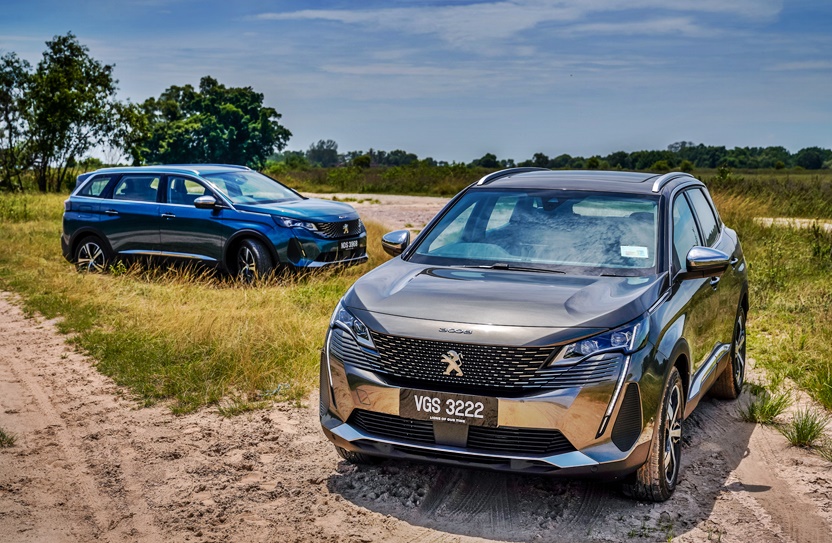
Stellantis (a merger between the Fiat Chrysler Automobiles and the French PSA Group) acquired the NAZA Automotive Manufacturing Sdn. Bhd. plant in October this year. Over 170 employees have returned to work and the company is working with more than 50 local suppliers with production ramping up for the remainder of 2021 to meet local demand. The plant assembles the 3008 and 5008, besides the 2008.
To know more about Peugeot models and aftersales services in Malaysia, visit www.peugeot.com.my. Peugeot owners in Malaysia are urged to provide their contact details to Bermaz Auto Alliance Sdn Bhd which is the new distributor for the brand.
Chrysler (FCA) ‘re-marries’ to form another mega corporation with Groupe PSA

Malaysians are on the roads again, motoring all over the country after having been stuck in their own states for a long time due to cross-border travelling not being permitted. While it was unpleasant and even distressing, it was necessary to try to prevent the spread of the COVID-19 coronavirus.
With the end of restrictions, we can now go anywhere we want (unless a specific area is under an Enhanced Movement Control Order) and with the end of the year coming up as well as the festive season starting, many will be on the highways.
Such long-distance travelling means that the vehicle should be in a proper running condition to avoid breakdowns that can really spoil a holiday or balik kampung journey. A breakdown will cause delays and inconvenience, but failure of brakes could result in an accident, which will be serious.
To ensure that the vehicle is in good running condition and for peace of mind, Sime Darby Auto ConneXion (SDAC) is having its year-end and Chinese New Year service promotion for Ford owners. The promotion starts from December 1, 2021 and continues until February 15, 2022.
Up to 20% Savings
Ford owners who book a service during the campaign period will enjoy savings of up to 20% on parts and 10% on labour fees for lubricants, brake and timing belt packages in addition to selected parts.
All vehicles brought to the authorised service centre for servicing will go through a 27-point inspection, conducted by Ford-certified technicians. This inspection covers many areas related to safety and will ensure that the vehicles are in tip-top condition for the long journey.
Genuine Ford Parts with warranty
When servicing at any Authorised Ford Service Centre nationwide, vehicle owners can rest assured that only original genuine Ford parts are used. These parts are made to the highest standards of quality, fit and finish and designed specifically for Ford vehicles. In the event of problems with the parts installed, there is a warranty of 12 months or 20,000 kms (whichever occurs first), excluding wear and tear parts.
Free merchandise
Vehicle owners who top up on lubricant packages with an additional RM40 spend on any parts or service will receive a free exclusive Ford-branded face mask. For brake and timing belt packages, those who spend an extra RM500 on parts or service will get an exclusive denim woven bag in addition to a Ford face mask. All merchandise will be available while stocks last.
“With travel restrictions now eased, people are looking forward to travelling back to their hometowns or taking weekend trips this holiday season. Our service promotion is timely for this occasion and Ford customers can take advantage of this service and maintenance promotion to stay safe on the roads while enjoying more savings,” said Turse Zuhair, Managing Director, Sime Darby Auto ConneXion.
How to make an appointment
Ford owners can easily book a service appointment online via the Ford website at their convenience, anytime and from anywhere. They can specify an authorised dealership or choose one closest to them anywhere in Malaysia. The real-time e-Service appointment booking option available allows owners to immediately know available time slots as well as select and confirm their preferred schedule (up to one month in advance).
The authorised service centres are Ford Ara Damansara, Ford Petaling Jaya, Ford Juru, Ford Butterworth and Ford Kuching. To make a service appointment booking online, click here.
For more information regarding the promotion or about Ford vehicles and services in Malaysia, visit www.sdacford.com.my
No charges for scheduled servicing during first two years of Ford Ranger ownership
At the Art Basel 2021 Miami Beach show in Florida this week, BMW M will present the Concept XM as a look ahead to the most powerful BMW M car ever to go into volume production. It also provides a first glimpse of the new front-end design for BMW’s forthcoming luxury-class models with its distinctive take on BMW X model design.
The new design language
The slim and iconic daytime driving lights (DRLs) and the contour lighting of the emotive kidney grille are the main focal points. The horizontal grille sits prominently between the headlights and tapers towards the outer edges, producing a near-octagonal outline that emphasizes the front end’s dynamic character. The black kidney grille elements are enclosed within an intricate surround and appear almost to be floating freely within a high-gloss black surface. M-style double bars within the grille add to the perception of width.
The boldly sculpted bonnet extends the contours of the kidney grille back in the form of two power domes. A pair of air intakes in the bonnet mimic the appearance of the LED searchlights in the roof and framing the statuesque body at its lower edge are the clean-cut black surfaces of the front apron. Triangular body-coloured blades at the outer edges accentuate the vertical air intakes while emphasizing the sporty and robust stance.
The visually expressive silhouette exudes presence with its size and the design language uses strikingly sculpted surfaces and extravagant lines. The two-tone paint finish further accentuates its distinctive lines, with the upper section in matt gold-bronze, while the lower section sports the Space Grey metallic shade.
Below the window graphic, a broad, High-gloss Black line – the ‘black belt’ – separates the two exterior colours. The signature M exterior mirrors give the car a clean-cut and technical, sporty edge. Throughout the side view, deliberately short character lines, which start off boldly before fading softly, accentuate the car’s agile, modern feel.
The expressive rear lights extend well into the car’s flanks and create an eye-catching transition into the rear. The black cladding typical of BMW X models above the wheels and on the sideskirts is very clearly defined and gives the body an elevated appearance.
The glasshouse of the Concept XM rises vertically and the colour of the roof contrasts with the black finish of the A-pillars. The windscreen seems to have an even heavier rake as a result, injecting modern dynamism into the front end. Slim LED searchlights have been incorporated into the roof above the A-pillars, adding to the SAV (Sport Activity Vehicle) image.
At the back, the rear window is inserted almost seamlessly into the rear end. The fresh interpretation of the design can also be seen in the arrangement of the BMW logo, which is laser-etched into the window below each of the two rails. This is a stylistic reference to the BMW M1, to date the only example of a standalone model developed exclusively by BMW M (and that was back in 1978).
Lower down, dominating the rear apron, are the characteristic twin tailpipes of BMW M models. The dual-branch, twin-tailpipe exhaust system reduces backpressure for the engine and also generates the emotionally rich M-typical soundtrack accompanying the engine’s imposing power delivery. The vertical arrangement and hexagonal interpretation of the tailpipes are a new take for this classically iconic feature.
PHEV only
The production model will have only a plug-in hybrid powertrain (PHEV) and it will be BMW M’s first electrified high-performance model. In the Concept XM, the powertrain is a M Hybrid drive system which combines a V8 engine and a high-performance electric motor to develop maximum output of 750 ps and 1,000 Nm. More detailed technical information is not available at this time but there is a claim of up to 80 kms running on just electric power.
Driver-focused cockpit
Like other M models, the cabin of the Concept XM has a driver-focused cockpit design. The lines and surface design of the instrument panel, centre console, door trim and seats give the ambience in the front compartment a progressive feel with their powerful geometry and high-quality materials. A bold trim element provides clear visual separation between the driver’s area and the other sections of the car.
The new BMW Curved Display screen grouping positioned creates a neat balance between traditional driver focus and modern digitality. Red accents on the steering wheel and centre console are M-specific references, while a trio of vertical elements presented in the three colours of the BMW M brand logo form the heart of the centre console.
The M Lounge
The rear area is referred to as the ‘M Lounge’, with special materials and expressive details for the seats along with black-tinted rear side windows. The large rear seat bench with its deep seat recesses forms an inviting space to relax. Only the diamond-shaped area of the head restraints – which provides the supporting function familiar from BMW M Sport seats in other models – is leather-trimmed. The lower sections of the seats offer high comfort and an exclusive couch character with their luxurious velvet upholstery and diamond quilting.
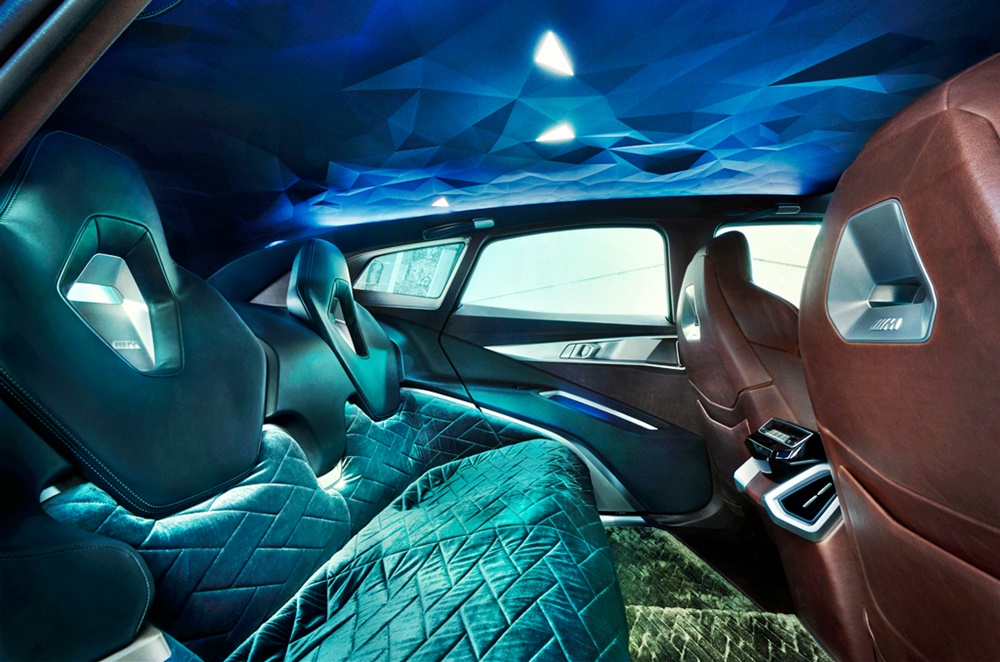
Illuminated and sculptural headliner
The visual highlight of the cabin is its headliner with a 3-dimensional prism structure. A combination of indirect and direct lighting produces a relief-like structure which showcases the headliner as an exclusive work of art. Together with the ambient lighting, it highlights the Concept XM’s blend of luxury and comfort to extremely striking effect. The ambient lighting can be activated in the three BMW M colours.
Production from end of 2022
The production model – the BMW XM – will be built from the end of 2022 at BMW’s factory in the USA which was also where the company first SAV, the X5, was built in 1999. The US market is a big market for BMW SAVs and is expected to be the most important sales market for the new high-performance model.
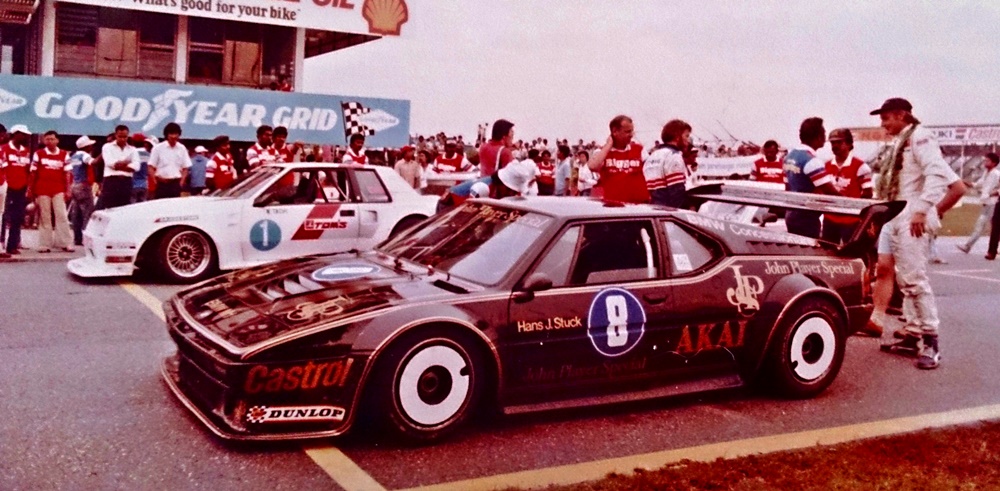

As mentioned in May, Mitsubishi Motors Corporation (MMC) is reviving Ralliart, the motorsport brand of the company. No details were given as to what the scope of the revival would be but an image of a Triton with Ralliart treatment was shown in a presentation on the carmaker’s FY2020 financial results that were made public.
At the 38th Thailand International Motor Expo in Bangkok this week, the first models of the revived Ralliart brand will be unveiled. These are the Triton Ralliart and the Pajero Sport Ralliart as special editions, based on the popular pick-up and SUV models made at the factory in Thailand.
No performance upgrades yet
For now, it appears that the special editions do not have any performance upgrades and are essentially differentiated from the standard models by Ralliart-themed cosmetics reminiscent of the historic cars in rallies.
Both models feature iconic side decals with red, silver and black stripes, and mud flaps with the Ralliart logo. The front grille and alloy wheels are painted black to differentiate from the standard trim. As for the interior, the floormats have the Ralliart logo and red-accent overlocks are specially fitted.
Exclusive accessories
The Triton Ralliart is based on the low-rider variant of the Triton Club Cab (Mega Cab) and Double Cab. For these two models, in addition to the common cosmetic features are front bumper garnish with a red accent and bedliner with the Ralliart logo. In addition, the two-tone model features black door mirrors, black door handles, black rear gate handle and black rear bumper.
The Pajero Sport Ralliart has front and rear under garnish with red accents and the Ralliart logo. Exclusive to the two-tone colour model are black fender arch moldings, black roof rails, black shark fin antenna and black tailgate spoiler. Two exterior colour options are available – a two-tone exterior with a White Diamond body and a black roof, and Jet Black Mica.
“We are truly honoured to bring back the Ralliart brand products to the fans of Mitsubishi Motors and Ralliart,” said Takao Kato, president and chief executive officer, MMC. “Starting from these Ralliart special editions in Thailand, we are planning to introduce more of the attractive items sequentially. We are also considering some exciting activities in the near future, so that the fans can feel and enjoy our Ralliart spirit. Please stay tuned with our revived Ralliart… there is more to come!”
The Ralliart special editions will be available from Mitsubishi Motors’ dealerships in Thailand but no word on whether other markets will get them. Quite likely, distributors in other countries like Mitsubishi Motors Malaysia may offer Ralliart accessories first and then progress to fully-equipped models at a later stage.
To know more about the Triton and to test-drive one, visit www.mitsubishi-motors.com.my for the location of an authorised dealer in Malaysia.
Sime Darby Auto Performance (SDAP), the importer, distributor and custodian of the Porsche brand in Malaysia, today introduced the all-new Porsche GT3.
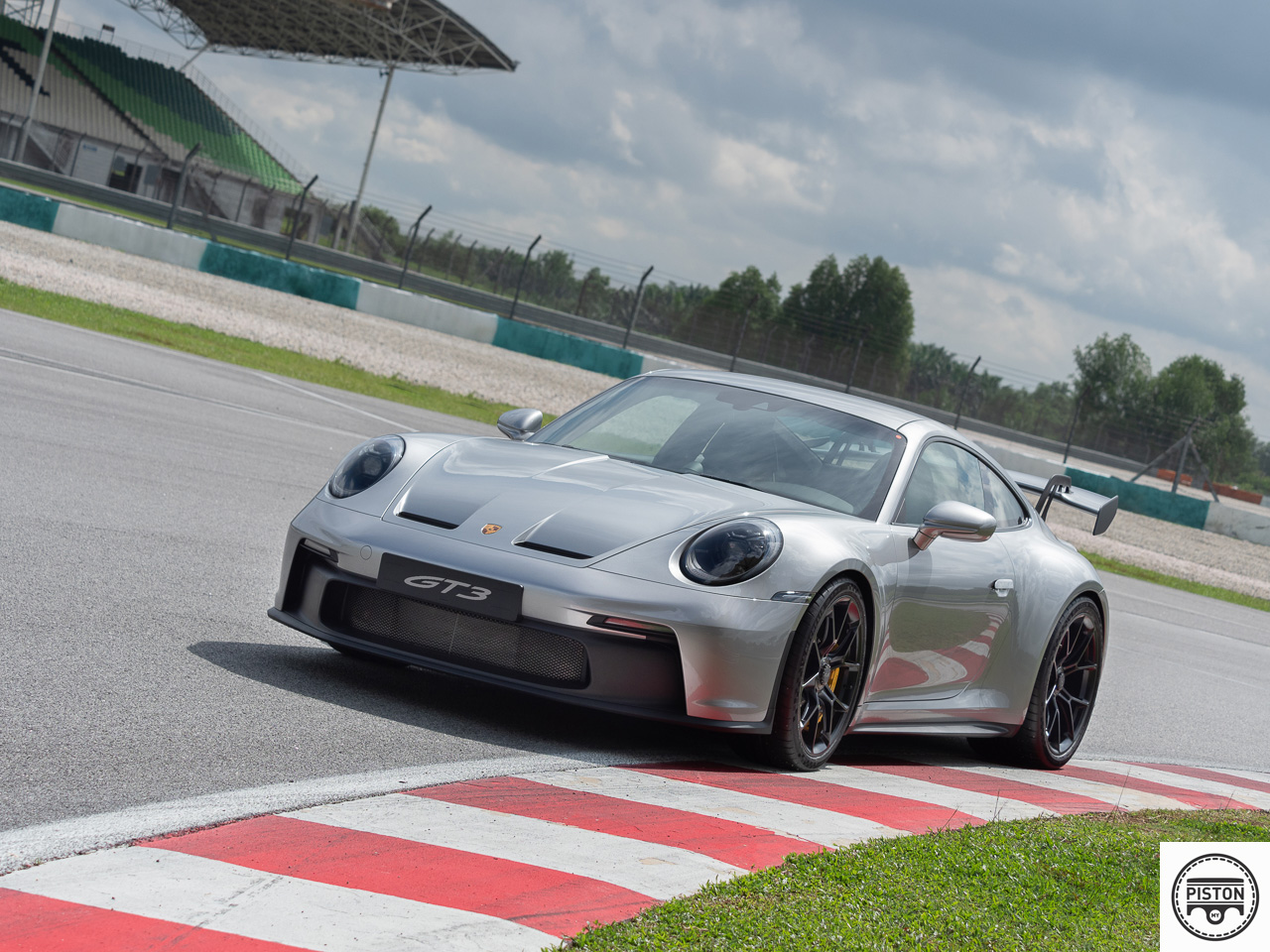
The GT3 can trace its roots back to back 1999 when Porsche needed a road going version of its race car for homologation purposes – and thus the GT3 was born.
Back then the GT3 offered the purest unadulterated driving experience a road car could offer. It was the closest a road driver could get to driving a race car.
Nothing has changed today as the GT3 is still hailed as the ultimate bridge between road and track.
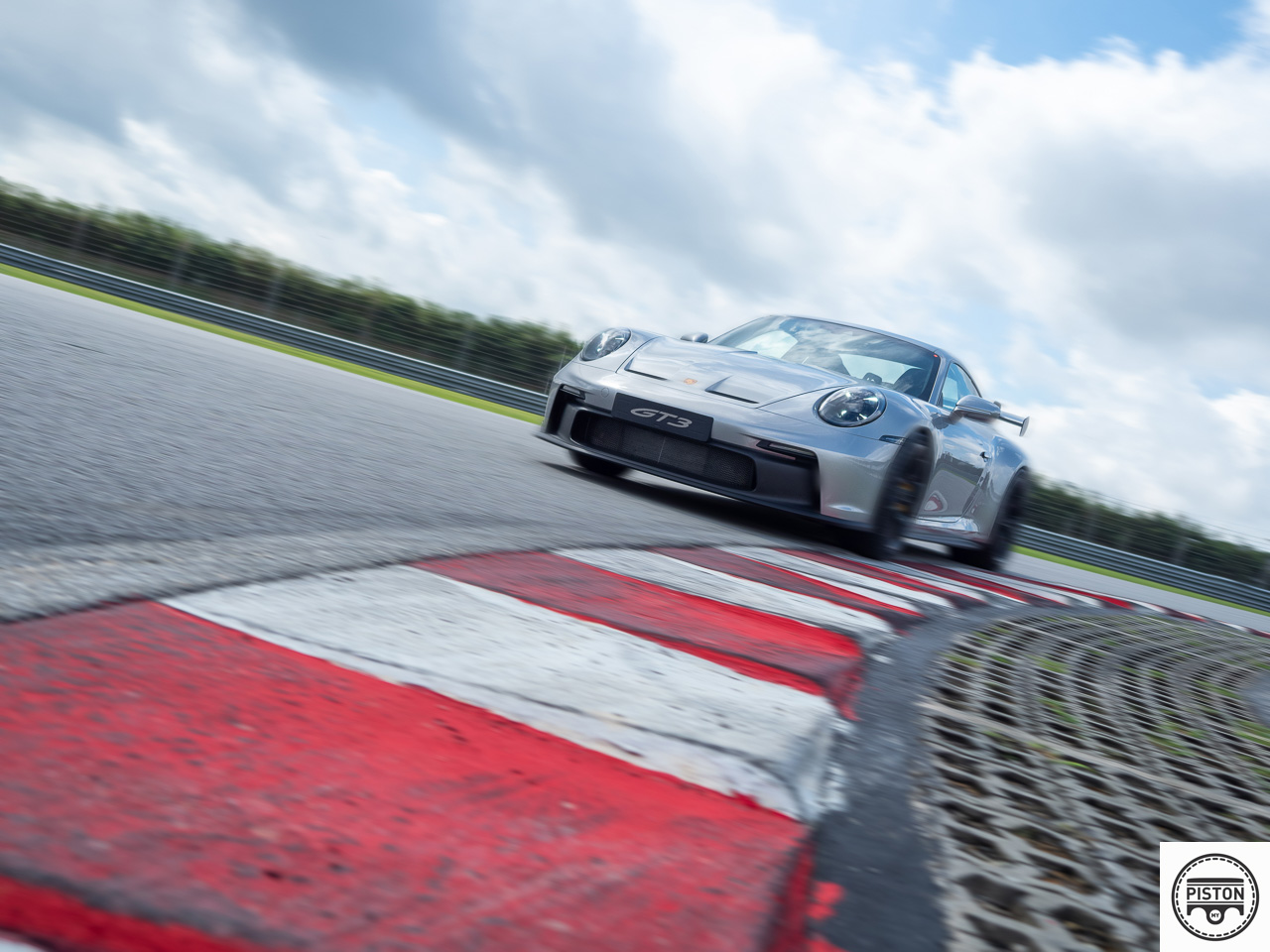
Over seven editions later, the all-new GT3 offers one of the most advanced technologies available in a road legal race car.
It is lighter, faster and smarter and this results in a car that laps the legendary Nurburgring Nordschleife a full 17-seconds faster than its predecessor.
In Malaysia, the all-new GT3 made its debut at the Sepang International Circuit (SIC).
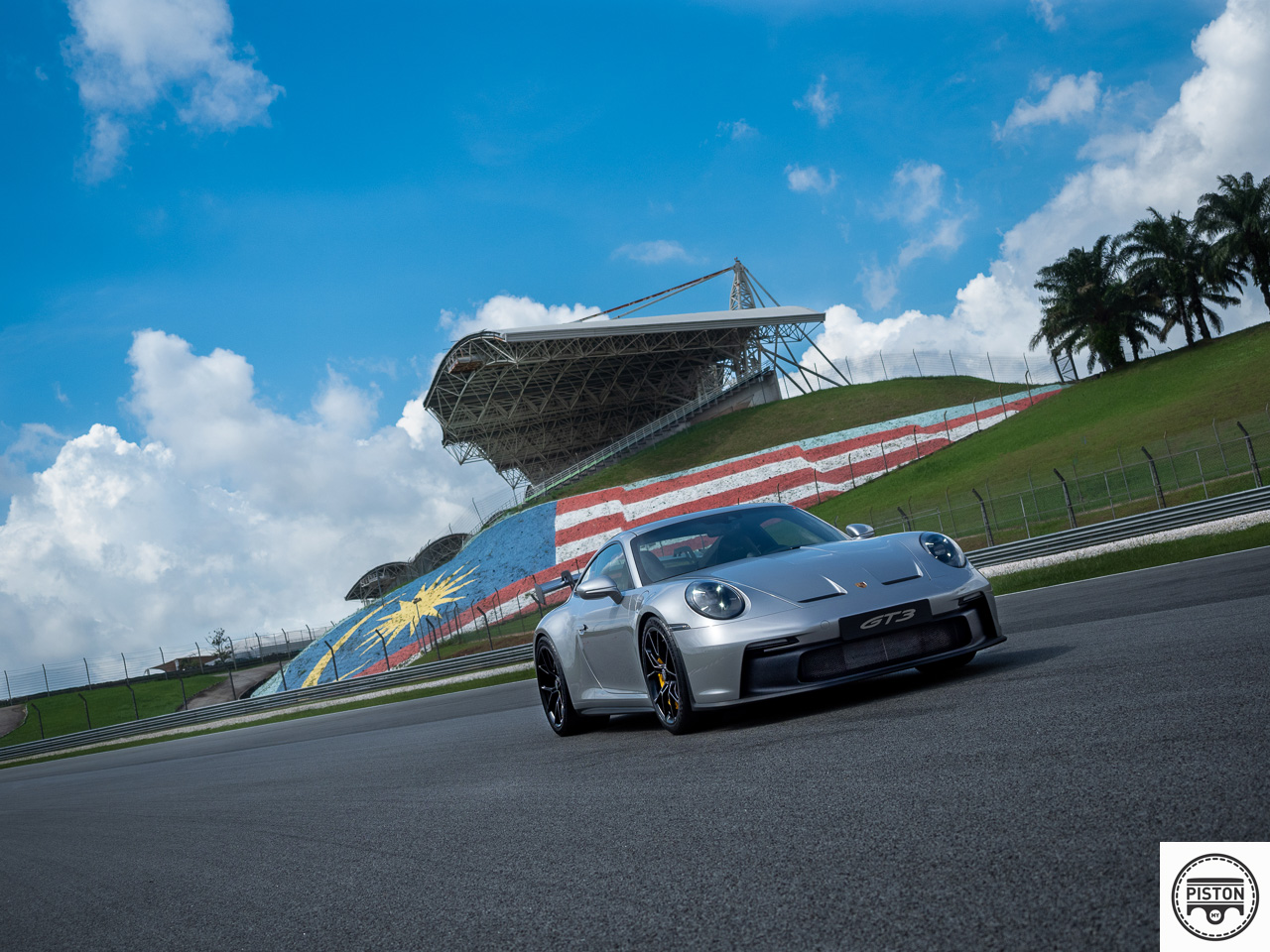
At the heart of the GT3 lays a naturally-aspirated 4.0-litre, six-cylinder engine that features individual throttle bodies for each of its six-cylinders.
This is unusual for a road car, but quite normal for a race car. And that is because the engine of the all-new GT3 is actually based on the race based 911 GT3R.
As such the new GT3 is puts out an astonishing 507hp and 470Nm of torque. This takes the GT3 to 100km/h in just 3.4 seconds and onto a top speed of 320km/h. Making the engine one of the most powerful naturally-aspirated engines ever produced.
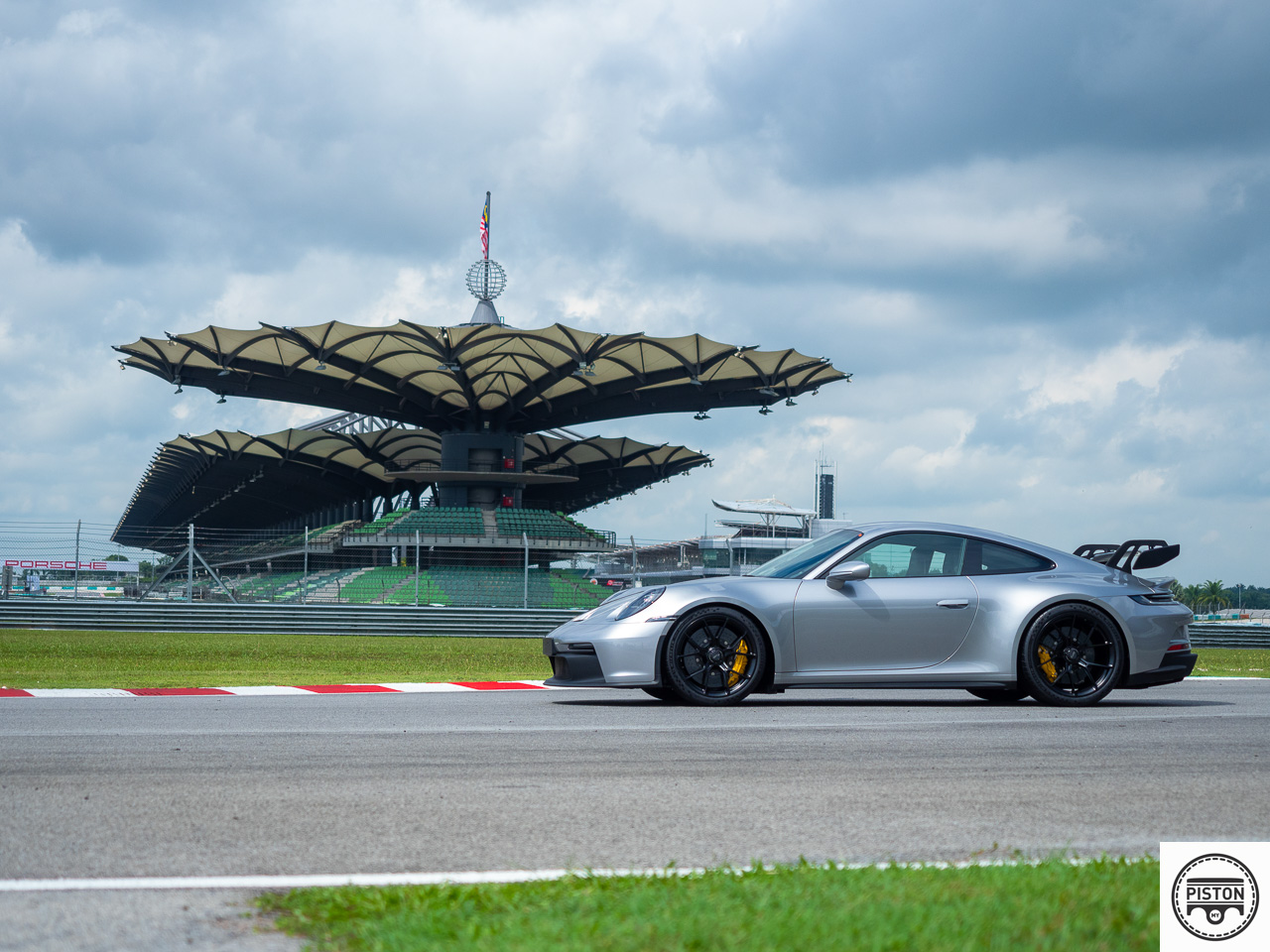
As for the transmission, owners can choose between a 7-speed PDK dual-clutch gearbox, or a 6-speed manual GT sports gearbox that is about 20kg lighter than the auto box.
The all-new GT3 seems to have perfected a seemingly perfect package.
It not only offers a race-derived engine, but also offers race-derived handling.
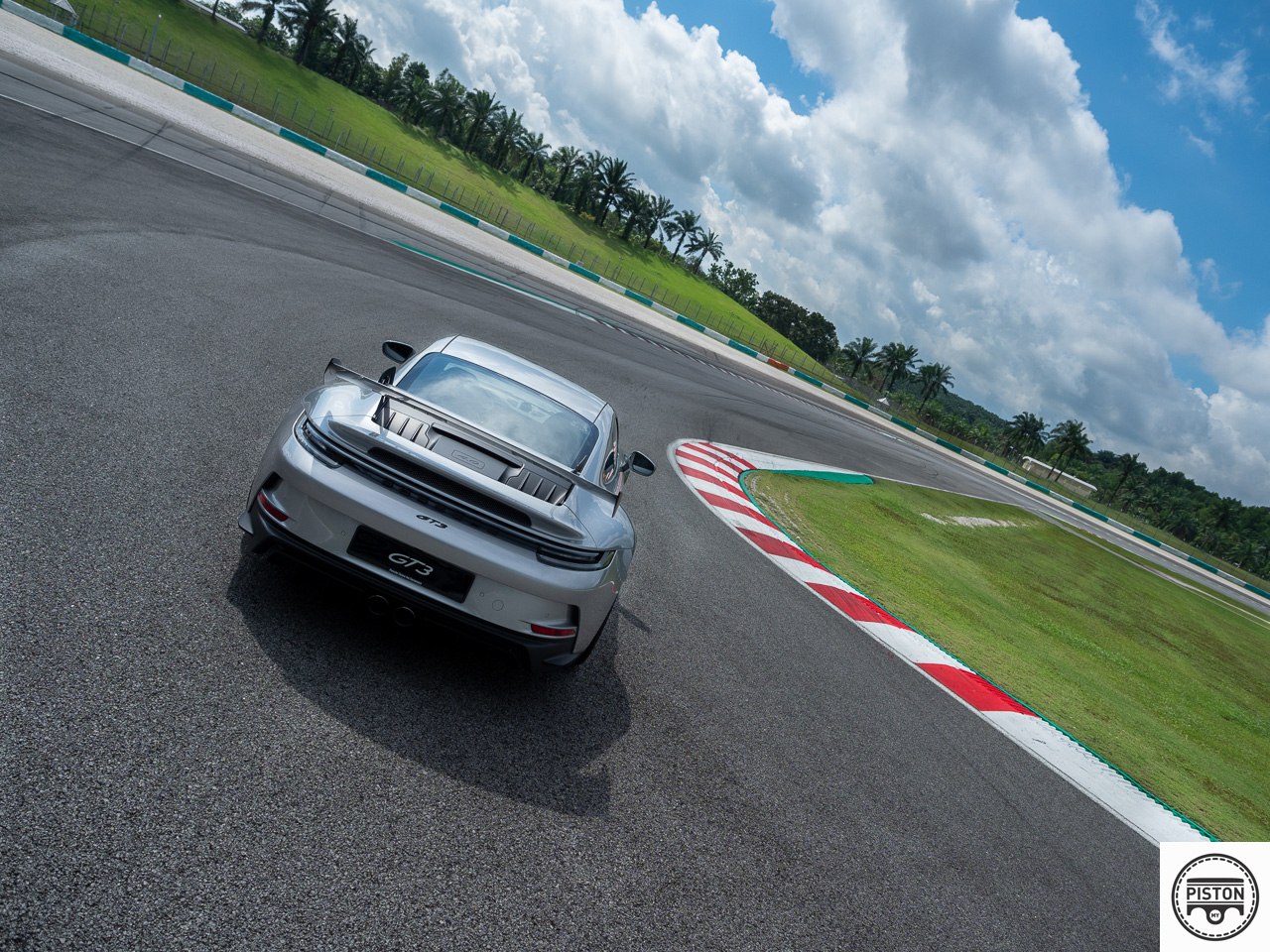
For example, the front suspension of the GT3 consist of a double-wishbone layout taken from the Le Mans-winning 911 RSR race car.
Then there is the new swan-neck rear wing mounting and diffuser than are also from the 911 RSR. This allows for 50% more downforce without increasing drag.
The all-new GT3 also features a manually-adjustable rear wing and diffuser elements that can be set to increase downforce by up to 150% for maximum cornering speed.
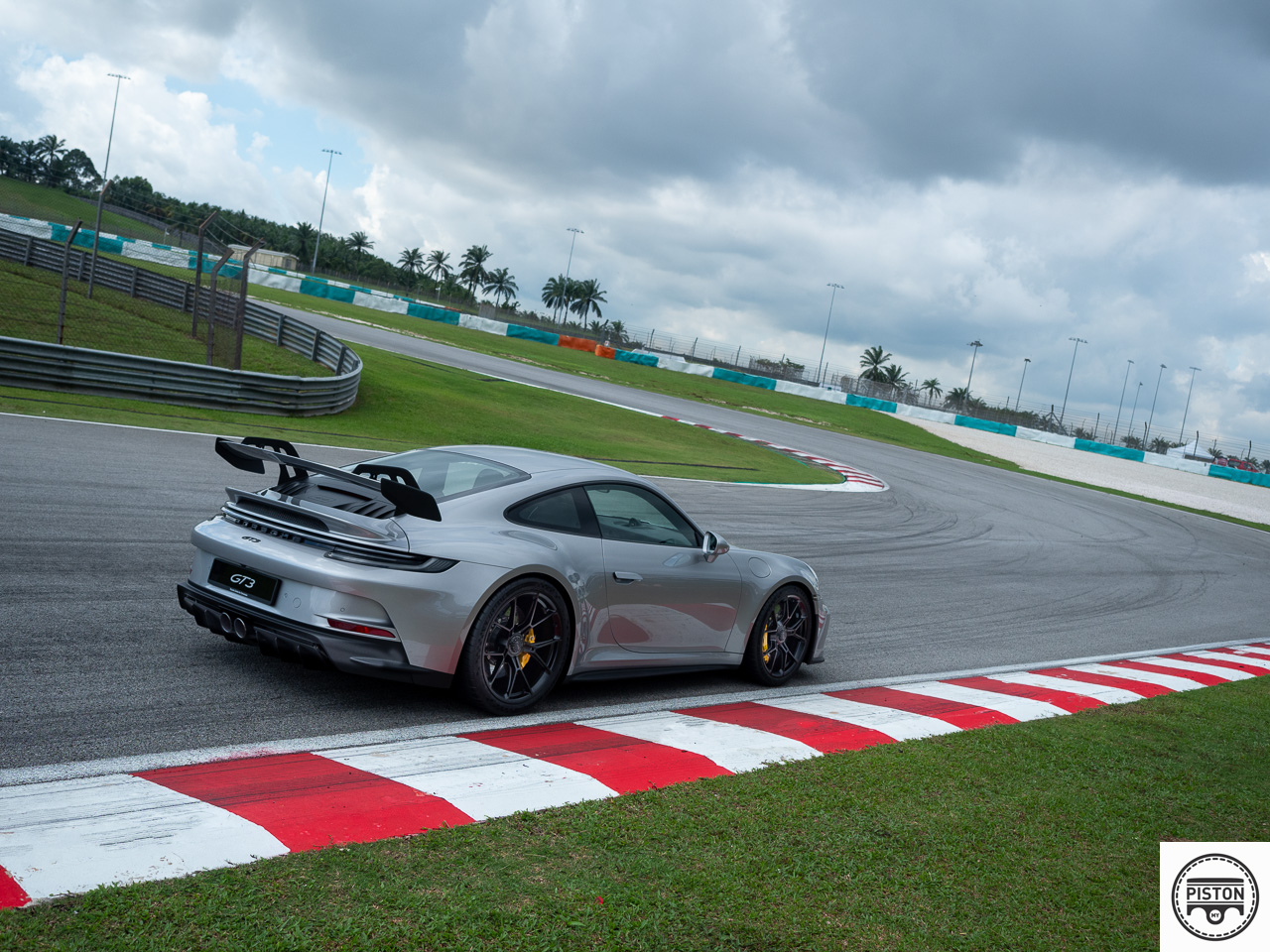
The best thing about the all-new GT3 is that it is available with a Touring Package at no additional cost.
The Touring Package rids the car of such dramatics as the swan-neck rear wing, and offers the same exterior paint work all over.
Porsche (and SDAP) says the new Touring Package “is perfectly suited to sports car connoisseurs with a passion for understatement and classic driving pleasure”.

And so it may ride the GT3 of that massive carbon-fibre rear wing, but in place of the fixed wing, the 911 GT3 gets an automatically extending rear spoiler which offers the necessary downforce at high speeds.
As for the interior, the GT3 benefits from a a design that is in-line with the current 992 generation but GT3-specific instrument cluster that features a central rev counter that goes up to 10,000rpm, and is flanked by two high-resolution 7-inch displays featuring a new track screen.
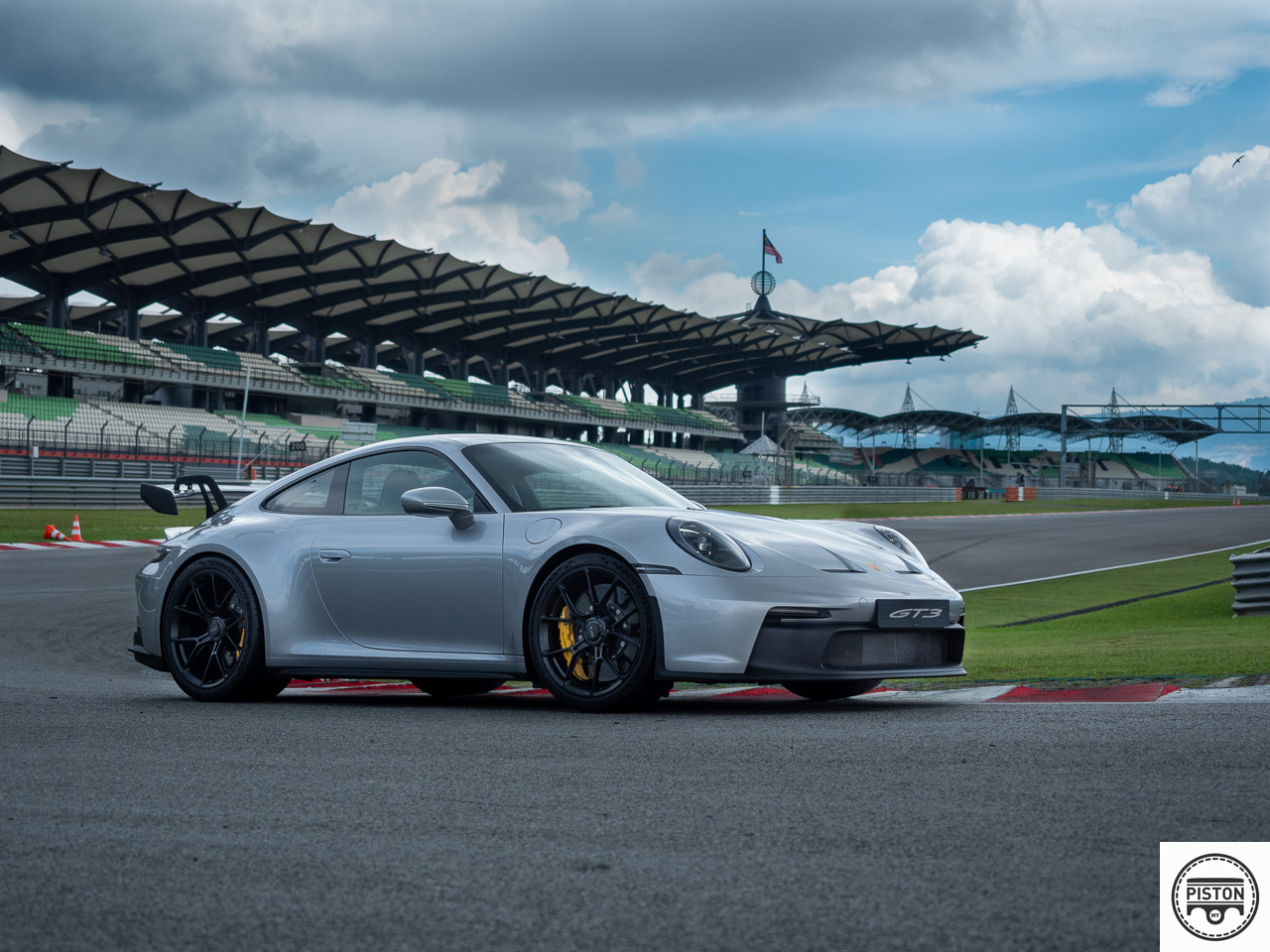
As with all other 992 generation 911 models, the all-new GT3 also gets a centred high-resolution 10.9-inch touchscreen display with the latest Porsche Communication Management system with only navigation and Porsche Connect Plus.
This also supports the Porsche Track Precision App that helps drivers maximise their track sessions and improve lap times by providing detailed driving data, including live displays and video analysis.
The all-new Porsche GT3 is now available at all Porsche centres nationwide with prices starting from a cool RM1,766,244 with SST exemption.
Since the 1990s, the Mazda BT-50 has been a ‘twin’ of the Ford Ranger, as the two carmakers worked together to develop a common truck model (they also jointly developed passenger cars, vans and SUVs). However, for the new BT-50, Mazda no longer worked with Ford (which unveiled its new Ranger recently) and instead formed a commercial partnership with Isuzu Motors to develop a new model.
KODO design makes the difference
It’s no secret that the new BT-50 is adapted from the latest Isuzu D-MAX which was launched in Malaysia in April this year. However, when you look at the two pick-up trucks, you will see that Mazda has used its KODO design language to differentiate appearances significantly. In fact, if you were not told of the Isuzu connection, you would probably not think of the D-MAX. And to ensure its brand is immediately known, there is the familiar front grille (enlarged to match the size of the truck) and the 3-dimensional signature wing that extends out towards the side.

There’s not a lot you can do with a truck design since the profile of cab and cargo bed are pretty much similar. So the areas where differentiation can be done would be areas like the lights. In the case of the BT-50, the headlights are distinct and sharp, taking in cues from Mazda’s SUV range, and achieving the ‘deep gaze’ characteristic of Mazda.
At the back, the tailgate is the key design point, shaped to flow towards the Mazda badge to create a continuity of movement from front to rear. This complements the overall sense of bold and powerful movement, even when standing still.
Two engine choices
For the Malaysian market, Bermaz Motor offers two engine choices – a 1.9-litre or 3-litre turbodiesel 4-cylinder engines. These engines are also used in the D-MAX, so they are proven powerplants although it is possible that Mazda engineers may have tuned the characteristics slightly differently to meet the brand’s own philosophy. The electronic control module is programmed to match the torque delivery characteristics of the engine by always selecting the best ratio. Both engines are paired with 6-speed automatic transmissions.
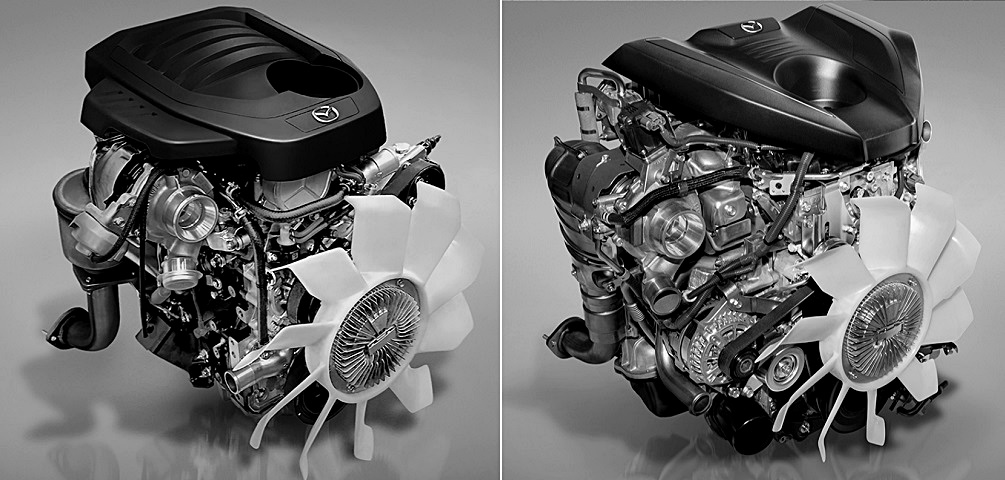
Inside the double cab
As with the exterior, the double cab interior also has the same high quality feel that Mazdas are known for. The human-centric environment ensures that drivers feel connected to their vehicle and are comfortable. The horizontal layout of the instrument panel extends out to the door trim on each side, visually widening the cabin. Fine stitching is used for the dashboard, instrument panel cover, and kneepads, adding an extra touch of quality to the interior. The door moldings that wrap around the dash area are a feature of the Kodo design philosophy.
Rear passengers have convenience and comfort with air ducts bringing cool air to them and a USB charging port to recharge personal electronic devices. Supportive seats wrap around the body to hold it well when driving over bumpy terrain. A large touchscreen infotainment system offers comprehensive functionality, including Apple CarPlay & Android Auto connectivity.
The new instrument cluster has two round analog meters flanking a 4.2-inch multi-information display in the centre. The panel surface is finished in Mazda’s deep, pure black color, creating a striking contrast against the light font and silver rims of the analog meters.
The rear doors are designed with wide openings and ample space for the feet and knees to pass through. This makes it easier for passengers to get in and out of the rear of the cab. Assist grips at the top are also useful for those who need support for the body.
As safe as a car
Even though this is a pick-up truck, safety is just as important as the occupants are the same as those who travel in a passenger car. Mazda therefore provides safety technologies which 7 SRS airbags and depending on the variant) active driver-assistance systems such as ABS + EBD with Electronic Stability Control and Traction Control. Hill Launch Assist (HLA) and Hill Descent Control (HDC) are also available, while a Rear Differential Lock is standard.
Certain versions of the new BT-50 also come with advanced systems such as Automatic High Beam, Blind Spot Monitoring with Rear Cross-Traffic Alert, Lane Departure Warning System, Forward Collision Warning, Auto Emergency Braking, and Adaptive Cruise Control. So it is comparable to a modern car which should be the case since most pick-up trucks are now being driven on highways more than off-road.
Preview in first week of December
The new BT-50 has a selling price starting from RM124,179.20 and purchasers get a manufacturer’s warranty of 5 years or 100,000 kms, whichever occurs first after original registration. Authorized Mazda dealers nationwide are now accepting bookings. For more information on the new BT-50 or other Mazda models, or to locate an authorized showroom, visit www.mazda.com.my.
Quality pre-owned Mazda vehicles available at the new Mazda Anshin website
The Toyota Yaris which was entered in the Sepang 1000KM endurance race (S1K) recently was the first ever appearance of the model in a local race and it was a ‘baptism by fire’ on all accounts. Competing in the top MTC Production Class, the Yaris, driven by the pair of 16-year old Hayden Haikal and 24-year old Timothy Yeo, had taken the chequered flag 3 laps ahead of their nearest rival. However, a post-race penalty reclassified the duo to third position in class and fourth overall.
Three Toyotas occupied the top 5 front positions on the starting grid for the 9-hour/181-lap race laps around the 5.534-km Sepang International Circuit. The number #39 Yaris had been the highest-placed Toyota on the starting grid, qualifying second with a time of 2 min 38.932 seconds. They were followed by Wing Hin Motorsports team mates and the pair of Boy Wong and Dannies Ng in the number #38 Vios.
Two entries from GAZOO Racing Malaysia
Backing them up were the trio of Tengku Djan Ley, Naquib Azlan and Akio Takeyama from TOYOTA GAZOO Racing Malaysia in car number #37 (another Vios) which was fifth fastest. TOYOTA GAZOO Racing Malaysia fielded a second entry, another Vios crewed by a trio comprising celebrity Zizan Razak, and young drivers Jwan Hii and Mika Hakimi in the SP2 Production Class in car number #36. Despite qualifying 30th , they went on to finish 20th in class and fifth in the inaugural running of the Vios Enduro Cup.
With three Toyotas in contention for overall victory, TOYOTA GAZOO Racing Malaysia’s number #37 Vios, the number #39 Yaris and the number #38 Vios showed their dominance from the beginning to the final hours of the race. Four cars traded places for the lead throughout the race, but no one expected a huge turn of events that was to unfold in the closing laps.
Bad luck for #38 Vios
The number #38 Vios’ hopes of a podium finish were essentially erased due to technical issues, forcing it to rejoin 6 laps down but still managing to finish fourth overall and in Class. The number #37 Vios, meanwhile, was well poised for victory until 26 laps to the finish when the front left wheel was ripped away, dropping the team to 11th in Class.
Their misfortune left the race for the taking of car number #100 driven by Mitchell Cheah and Brendan Paul Anthony, but their hopes of a victory too came to a crushing end when mechanical problems 10 laps from the finish put them into retirement.
Yaris takes podium finish on debut
As all this unfolded, the charging #39 Yaris kept piling on the pressure and clocking consistent lap times right up to the chequered flag. “The Yaris performed impeccably, not putting a foot wrong! This is a huge testament to the car’s performance and reliability under extreme conditions, and to finish on the podium in the prestigious S1K race on its debut is, without a doubt, an amazing result,” said a happy Mr. Takeyama who is also GAZOO Racing Malaysia’s Chief Motorsports Officer.
“We would like to have won and seen two or all three cars on the podium but unfortunately, in racing, nothing is ever certain until you cross the finish line, and this is a disappointment we will have to graciously accept despite running very competitively until the final hours,” he said.
“The S1K is a challenging test of nerves not only on the reliability and durability of the car, but also the physical and mental strength of the competing teams and drivers,” he said, with his personal experience of racing in the event. ”As a team, we have proven to ourselves that we are competitive, and this setback has certainly fuelled our desire to come back and be even stronger next year.”
The Yaris’ third place finish, however, was made that much sweeter with one of the drivers (Hayden) being a competitor and the youngest ever champion in Toyota’s Vios Challenge racing series. In fact, eight of the drivers in the top 4 cars in contention for the race win had competed in the one-make series which has run for 4 seasons.
“The TOYOTA GAZOO Racing Festival and Vios Challenge will next year enter its fifth successive season and we hope that it has not only made a huge impact towards enhancing the profile of Malaysian motorsports by bringing it to the masses, but also in creating a strong foundation for the development of existing, new and especially young drivers. We are committed in making an impactful contribution to Malaysian motorsports and this is an initiative we intend to continue to expand on moving forward,” Mr. Takeyama promised.
Inaugural Vios Enduro Cup
In the inaugural Vios Enduro Cup, Aylezo Motorsports’ trio Mirza Syahmi Mahzan, Zen Low and Aiman Haziq completed 166 laps enroute to collect a cash prize of RM10,000. It was a 1-2 victory for Aylezo with Dato’ Danny Yip, Kenneth Teh and Chang Choon Ming placed second. In third spot was 23 Motors’ Al- Farouk and Abdull Miqail, followed by Toyotsu Racing’s Liew Jo Choon, Tan Chan Wei in fourth.
A total of 10 Toyota cars took to the track for the S1K race which attracted 38 teams, with three cars competing in the MTC Production Class and the remaining seven vying for positions in the SP2 Production Class and the inaugural running of the Vios Enduro Cup.
Highlights Of The Season 4 Vios Challenge Night Races (Second Night)
Nissan will be stepping up its electrification strategy as it aims to be carbon-neutral across the lifecycle of its products by its fiscal year 2050. With its new long-term vision – Nissan Ambition 2030 – announced today, the carmaker will advance technologies to reduce its carbon footprint and pursue new business opportunities and become a sustainable company.
Having been a strong promoter of electric vehicles (EVs), starting with the LEAF, Nissan will continue to place electrification at the core of the company’s long-term strategy. In this respect, it aims to accelerate the electrification of its vehicle line-up and rate of technology innovation with investments of 2 trillion yen (about RM76.2 billion) over the next 5 years.
23 new electrified models to come
By fiscal 2030, the Nissan range will see 23 new electrified models, including 15 new EVs, to achieve an electrification mix of more than 50% globally across the Nissan and Infiniti brands. Within the next 5 years, 20 new EV and e-POWER equipped models will be launched and with these new models, more than 75% of sales in Europe will be electrified models by 2026. In Japan, the mix is expected to be more than 55% of sales, while in China, it will be more than 40% of sales.
“We are proud of our long track record of innovation, and of our role in delivering the EV revolution. With our new ambition, we continue to take the lead in accelerating the natural shift to EVs by creating customer pull through an attractive proposition by driving excitement, enabling adoption and creating a cleaner world,” said Nissan COO Ashwani Gupta.
Representing the next stage of Nissan’s electrified future, the company today also unveiled three new concept cars that offer enhanced experiences through sophisticated technology packaging. These concept cars are being developed under Nissan EV Technology Vision, a technology study that looks beyond the Ariya and next-generation crossover EV. The technology considers the direction of future EVs, and how advancements in battery technology, hardware and packaging can offer customers a wide variety of mobility solutions to match their needs and lifestyles.
All solid-state battery (ASSB) technology
At the core of Nissan EV Technology Vision is the integration of all solid-state battery (ASSB) technology that integrates with optimized components into a skateboard-like structure that allows for a variety of vehicle types. The optimum hardware structure will bring out the full potential of future complex software configurations and further realize the precision, performance, efficiency and versatility of EV offerings. Recharging time will be reduced to one-third, it is claimed.

ASSB, which offers innovative integration of the body, chassis and battery pack, has ideal geometry with electric drive. Motors are located at the front and rear and together with a very low centre of gravity and ultra light weight, optimal mass distribution can be achieved. To efficiently manage and operate the vehicle precisely, AI (artificial intelligence) will also be integrated and this includes technologies such as Advanced e-4ORCE and Advanced ProPILOT.
Nissan will also continue to advance its lithium-ion battery technologies and introduce cobalt-free technology to bring down the cost by 65% by fiscal year 2028. The proprietary ASSB will be installed in EV models by fiscal year 2028.
In addition to technology upgrades, Nissan will localize manufacturing and sourcing to make EVs more competitive. The carmaker will expand its unique EV Hub concept, EV36Zero, which was launched in the UK, to core markets including Japan, China and the USA. EV36Zero is a fully integrated manufacturing and service ecosystem connecting mobility and energy management with the aim of realizing carbon neutrality.
Preview of future models
For those who worry that electrification will mean the end of sportscars from Nissan, this seems unlikely to happen. Even in the EV age, there will be sportscars although they may have a different sort of feel from today’s musclecars with combustion engines. They will still offer impressive performance, thanks to the high torque characteristics of electric motors.
The Max-Out concept (above) is one idea which Nissan designers are looking at and it is a convertible. Technical details are not available at this time but there is the promise of ‘a new driving experience with superlative stability and comfort’. The low centre of gravity will provide dynamic cornering and steering response with limited body roll and the occupants will feel united with the car. The 2-seater has a unique ability to morph the seating, flattening into the floor for more interior space when needed. This would be ideal when the driver is out on the road alone.
The Max-Out will have Advanced e-4ORCE which offers powerful, smooth and high output, ride comfort, and independent brake control. This electric-drive 4-wheel-control technology integrates Nissan’s electric propulsion and 4WD control technologies with chassis control technology to achieve a huge leap in acceleration, cornering and braking performance on par with the latest sportscars.
The Surf-Out concept (above), as the name suggests, is more of an adventure concept with the bodystyle being that of a compact pick-up. It is all-terrain capable and could have a variety of power outputs to suit different conditions. The low and flat cargo space will make stowing gear convenient, while the vehicle can also supply electric power for other devices or equipment. Like the Max-Out, this concept vehicle is also engineered with Advanced e-4ORCE.
With the Hang-Out concept (above), the designers are exploring new ideas for interior layouts. This is possible as the floor is completely flat from front to rear. Thus, the cabin can be a mobile living room which travels off the highway. Theatre-style seating will make viewing movies on the built-in display enjoyable for everyone. Special effort is made to suppress vibrations and jolts so that the occupants are less likely to experience motion sickness.
The driver will have the support of Advanced e-4ORCE and Advanced ProPILOT to make journeys safer and more comfortable. ProPILOT technology is already available in some Nissan models as the carmaker was the first to introduce a combination of steering, accelerator and braking that can be operated in full automatic mode. This technology enables autonomous operation during highway driving in single-lane traffic.
Nissan aims to expand ProPILOT technology to over 2.5 million Nissan and Infiniti vehicles by fiscal year 2026. The company will also further develop its autonomous vehicle technologies, aiming to incorporate next generation LIDAR systems on virtually every new model by fiscal year 2030.
Besides the three models, a more advanced concept model is the Chill-Out (above), which shows some of the design language that we might see in future Nissan vehicles. It sits on the modular CMF-EV platform of the Renault-Nissan-Mitsubishi Alliance.
Designed specifically for electric vehicles, the CMF-EV platform is exceptional in its modularity. For example, it allows for the installation of batteries of different heights which means it can be used for low sedans as well as SUVs which have more ground clearance. The platform is variable in its length, making it applicable for more different types of vehicles.
Brake Assist (BA) is a feature which is listed among the active safety systems of many cars today but how it works and why it enhances stopping may not be known by most motorists. BA, which appeared in the second half of the 1990s, is a supplementary brake system which can also be considered a driver assistance system.
A simple explanation of BA would be that it boosts braking pressure to the maximum available as this can have a positive effect on the stopping distance, especially with anti-lock braking systems, better known as ABS.
Helping older people brake better
When Toyota first introduced it in 1997 in the Raum model, it said that one of the reasons for developing BA was to help older drivers. These drivers might not apply full pressure on the brake pedal in an emergency, or may not have sufficient strength. Thus, the system will detect when there is emergency braking, eg sudden pressure on the pedal, and boost the pressure to maximum.
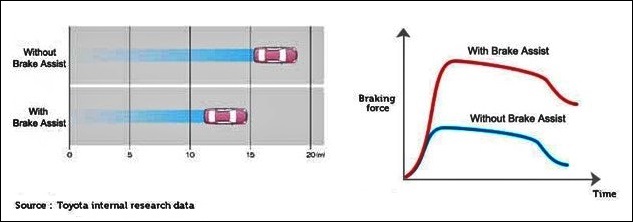
Emergency braking can save lives. However, many drivers then step on the brake pedal quickly but not forcefully enough – this is what Mercedes-Benz engineers discovered in the early 1990s during tests in the company’s own driving simulator. Their answer was BAS, considered one of the key links in the chain of important Mercedes-Benz safety developments.
BAS evolved from ESP
Mercedes-Benz introduced their version of Brake Assist, which they referred to as BAS, in late 1996. It was standard initially in the S-Class (W 140) and SL (R 129) and built upon the functions of the Electronic Stability Program (ESP), or vehicle stability control as it is also known.
These advanced systems not only use the sensors installed in the car but also state-of-the-art radar technology in order to capture the scene in front of the car and to identify a situation in which an accident is imminent. Mercedes-Benz offers very similar systems for its commercial vehicles known as Active Brake Assist (in the Actros heavy-duty truck).
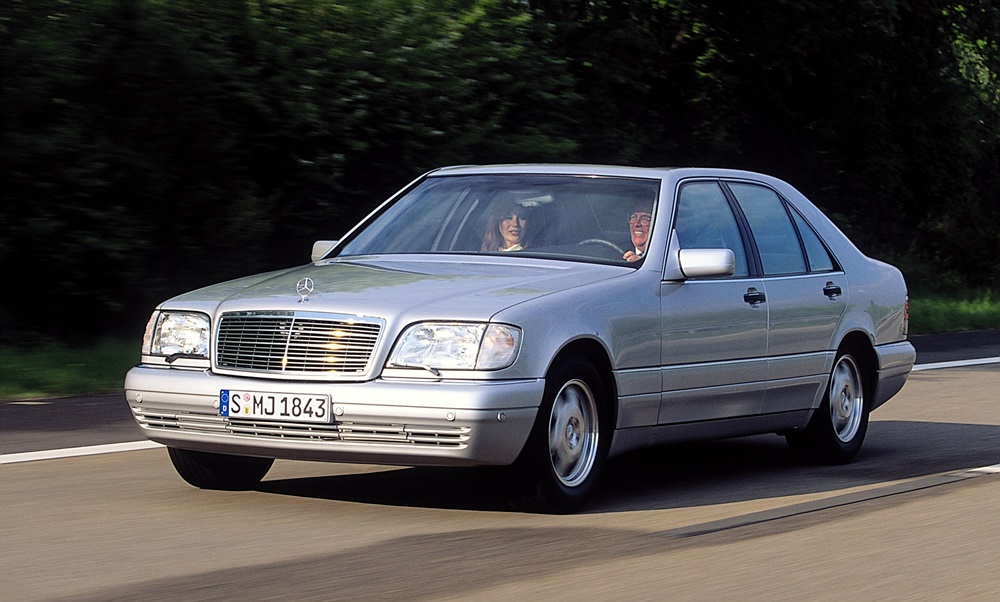
How well does BAS work?
BAS interprets a certain speed at which the brake pedal is depressed as an emergency situation and builds up maximum brake boost within fractions of a second. This significantly shortens the braking distance – at 100 km/h on dry roads, for example, by up to 45%. Mercedes-Benz investigated its effect in the driving simulator and found that BA was able to mitigate or even prevent rear-end collisions.
It also made an effective contribution to pedestrian protection. In a series of experiments, 55 car drivers drove through a town at 50 km/h when suddenly a child ran onto the carriageway. Only full braking prevented the accident.

Additional functions with BAS PLUS
The next evolutionary stage by the German carmaker was Brake Assist PLUS which made its debut in the S-Class from the W 221 series in late 2005. Besides warning the driver of an imminent head-to-tail crash by means of visual and acoustic signals, it automatically computes the brake pressure required to prevent the accident.
BAS and BAS Plus are integrated in the PRE-SAFE brake system that is today available in every Mercedes-Benz car. PRE-SAFE can automatically brake the car if a collision is predicted, and the PRE-SAFE brake works together with the BAS PLUS, the latter making its brake boosting effect available as soon as the driver steps on the brake pedal. If the driver does not react to the warning signals emitted by BAS PLUS, the PRE-SAFE brake initiates automatic partial braking to decelerate the car with some 40% of the maximum brake power.
Radar technology made the advanced capability of BAS PLUS possible. It detected the distance to cars ahead, warned the driver of insufficient distance and calculated the necessary braking assistance in the event of an imminent collision. If traffic came to a standstill and the driver actually had to step on the brake pedal, BAS PLUS built up the brake pressure calculated for the respective situation instantly.
BAS PLUS uses two radar systems: a 24-gigahertz short-range radar scanning the surroundings in front of the vehicle with an aperture angle of 80 degrees and a range of 30 metres. In addition, the 77-gigahertz radar of DISTRONIC scans 3 lanes of a motorway up to a distance of 150 metres with an aperture angle of 9 degrees. Tested in the driving simulator, the results were impressive: while the accident rate in tests with conventional braking technology was 44% on average, it dropped by three quarters with the help of BA PLUS.

Braking systems remain essential for road safety. In addition, emergency braking systems triggered on the basis of detecting potential accidents are an important foundation for the highly automated vehicles to come, and thus an essential part of the vision of accident-free driving.
Data for Road Safety initiative in Europe provides advance warning of dangers ahead